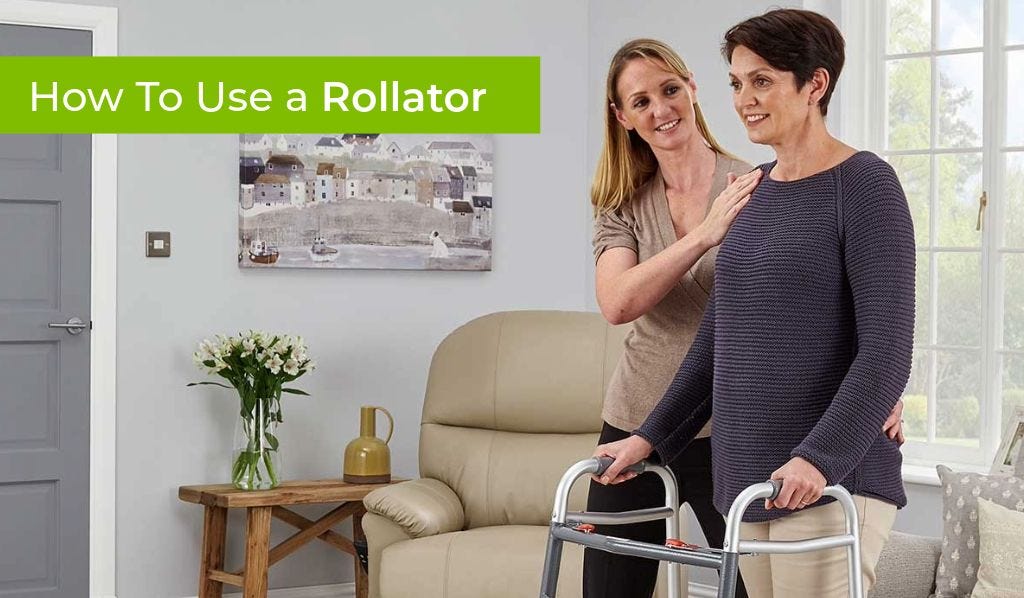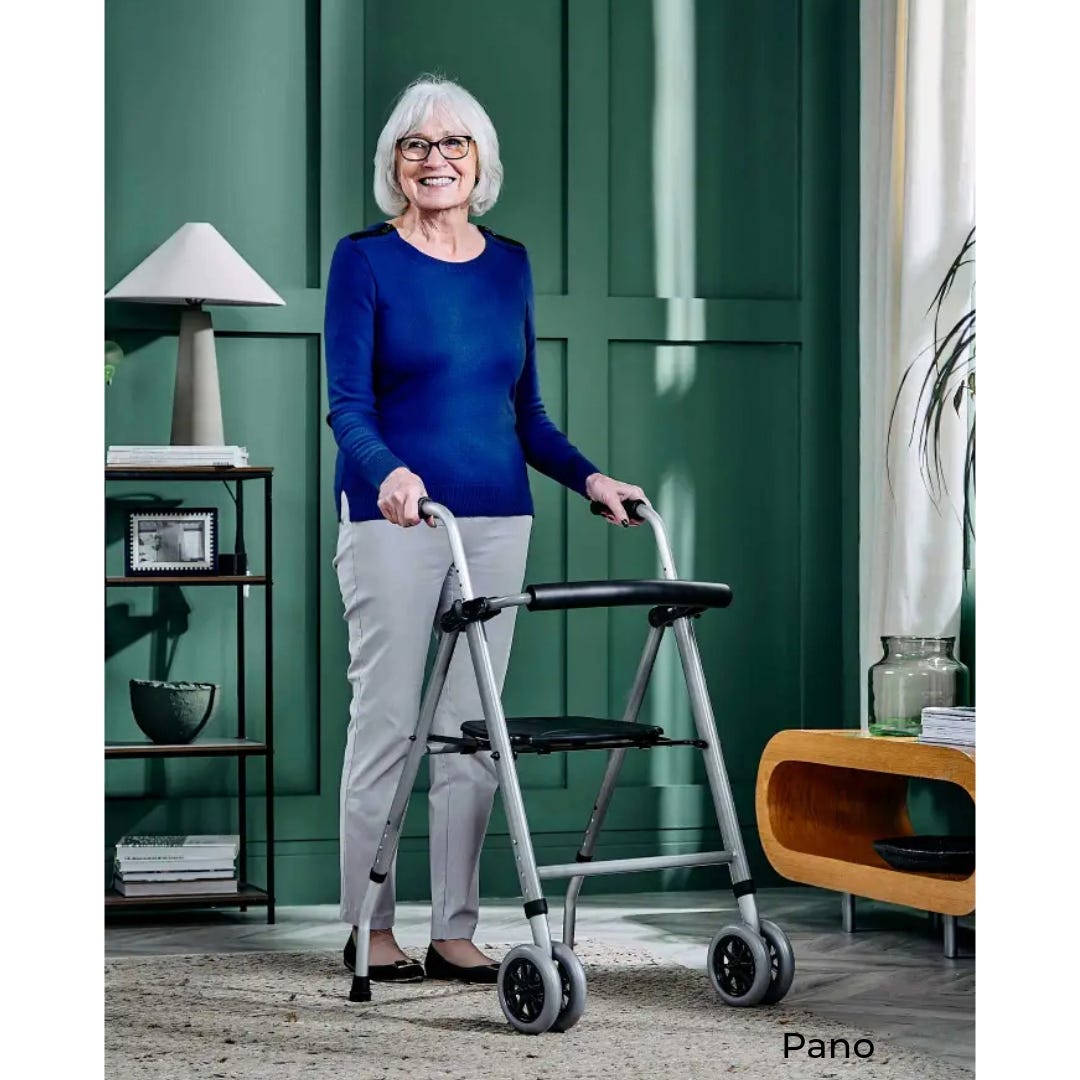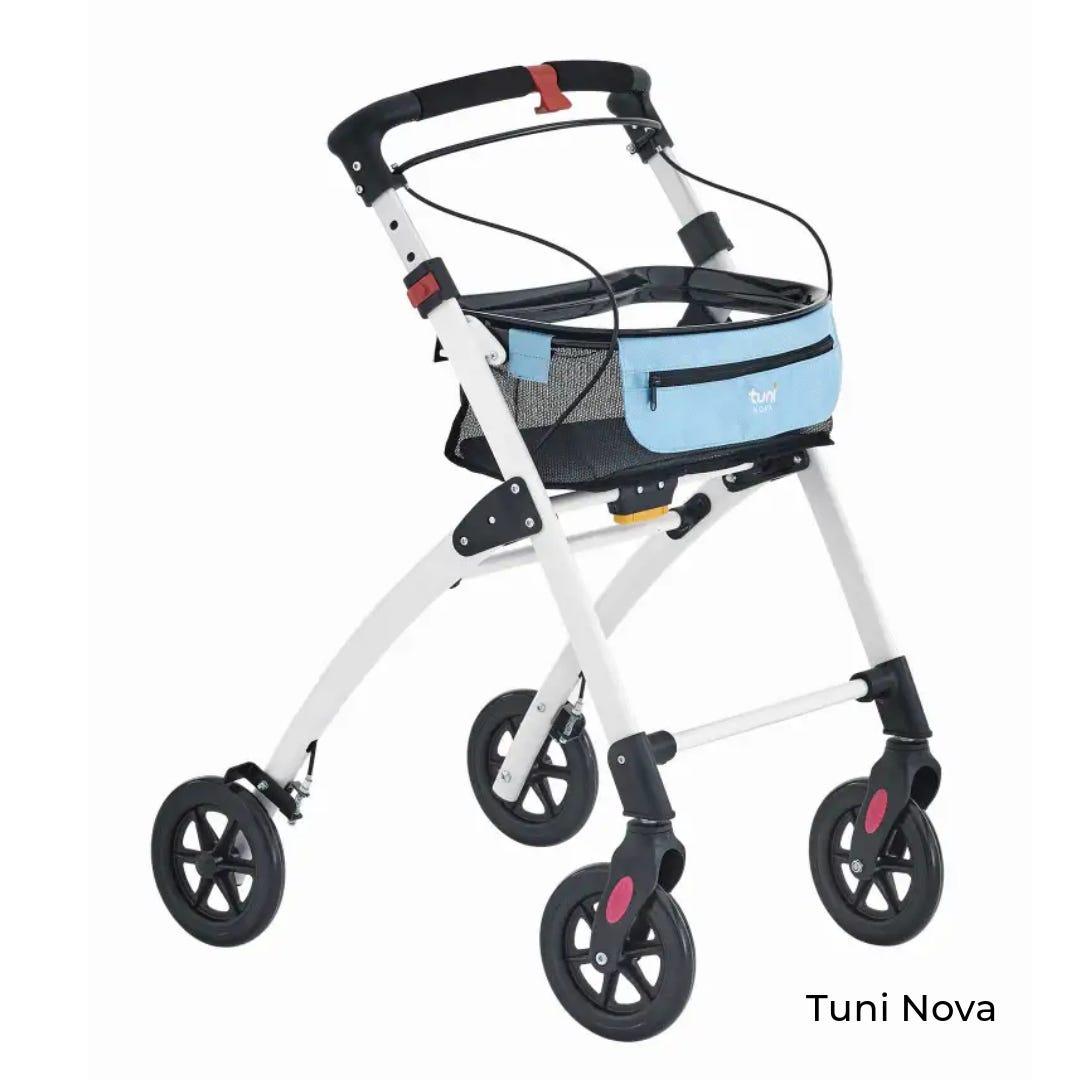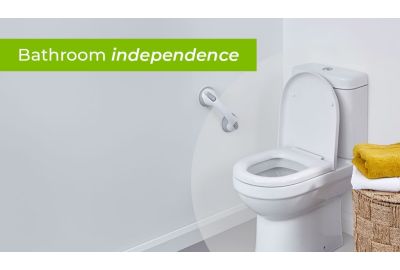Keeping mobile is a huge part of maintaining independence for so many people. Not only does it allow the freedom to stay involved in activities but it’s well proven that maintaining movement can the delay onset of, or even improve, some health conditions.
It certainly improves psychological wellbeing too. With all that taken into consideration, when you find your mobility becoming limited or unstable even with a stick, if you’ve had a fall or can’t manage distance anymore, the losses can feel huge. It’s at this point that a walking frame can really become liberating!
Keeping mobile – Use it or lose it!
Exercise, diet and lifestyle choices can help keep you stronger for longer, reducing aches and pains.
Walking, and sometimes just simply standing, can help prevent and even reverse conditions like chest infections, joint pains and pressure sores to name a few.
Whether taking two steps to move from a wheelchair to a commode, or a 20 min stroll along the seafront, the health benefits are clear.
But the risk of injury, particularly from falls needs to be managed and this is where walking frames come into their own, with the key being knowing how to safely use them.
So let’s look at how to improve your safety, confidence and freedom when walking with a frame:
Firstly, understand the variety and the terminologies. Zimmers, rollators, trolley rollers, wheeled frames, you’ve probably heard them all, but they are not all necessarily referring to the same thing.
Professionally speaking, a zimmer is a 4 ferruled frame, a rollator is a two wheel, two ferruled frame, a trolley is an indoor 4 wheeled walker with shelves and a roller or wheeled walker is generally accepted to refer to a 4 wheeled outdoor frame.
However, users, manufacturers and suppliers often use their own terms, so it’s really helpful to always check images or better visit a showroom before you buy a frame. Take a look at the selection of rollators at our 4 Wheel Walkers & Rollators with Seats & Baskets to gauge the scope available.
Secondly, choose a frame that meets your needs. Zimmers and two wheeled walkers are a traditional NHS provision. With cumbersome but sturdy grey frames, being reliable but dull, having either no or fixed direction wheels these frames are not great for assisting with outdoor mobility.
Equally, indoors they have a limited scope as they are designed for use with both hands at the same time, meaning your performance in daily living tasks is significantly limited as your hands are full! Not exactly helpful to keep you independent!
The Pano 2.0 Lightweight Wheeled Walker and Tuni Venus Walker with 2 Wheels are more practical versions of this style of walker, having a platform or basket to help you carry items from room to room, allowing you to securely keep hold of both handles at all times.
One Step at a Time: Safety First
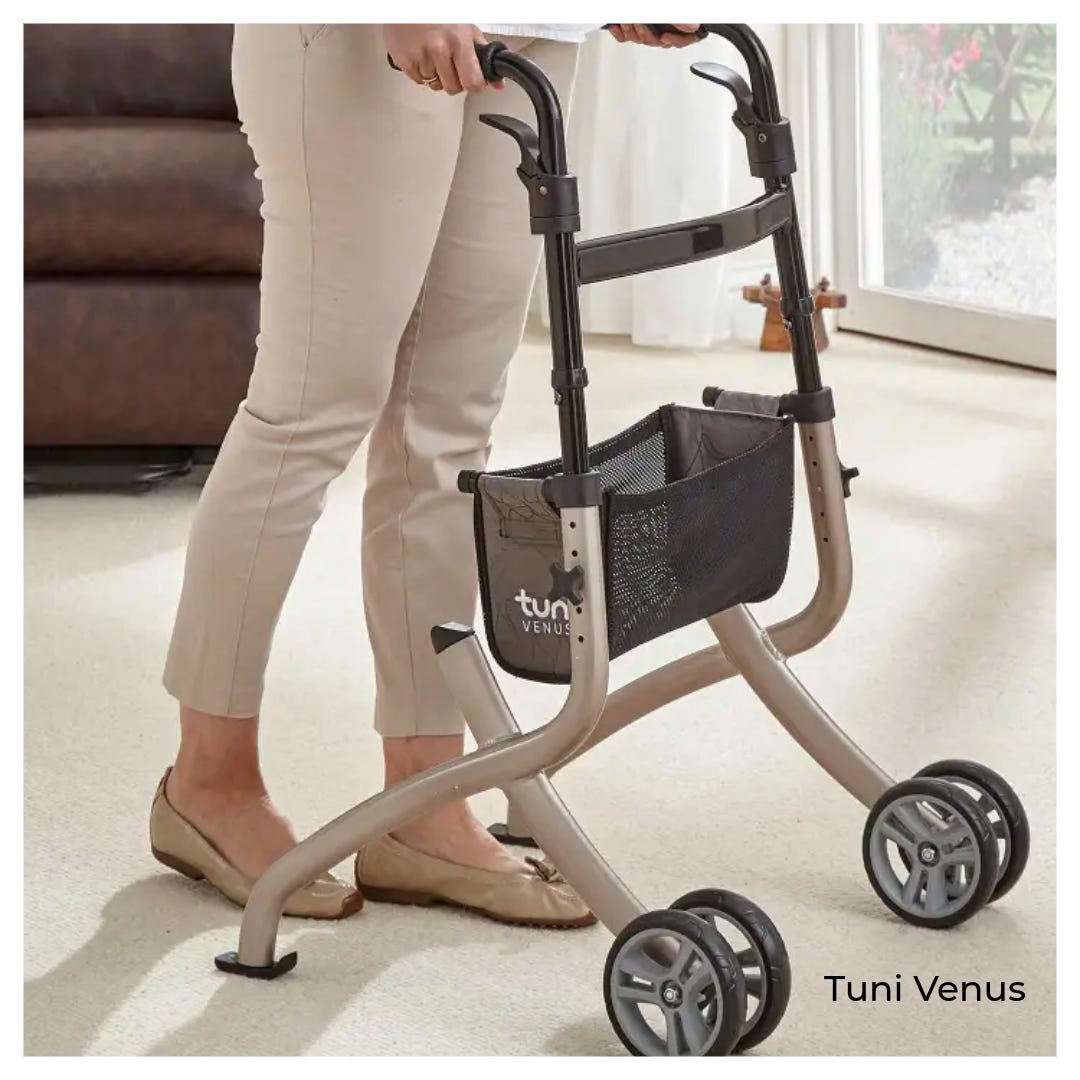 When first trying an indoor walker like this, check it is at the right height for you. You need the handles to be at wrist height. Then check the environment.
When first trying an indoor walker like this, check it is at the right height for you. You need the handles to be at wrist height. Then check the environment.
You want to avoid changes in levels, textures and general trip hazards, as the rear ferrules are more likely to catch or drag on surfaces or wires and can cause the frame to become unbalanced, as well as you! To start mobilising you will need to put weight through the front of the frame and release the weight on the back.
Then slide the walker forward, keeping a bend in the elbows, and step into the frame with your first foot, then bring the second foot to meet it before moving the frame again. If you wish to walk with a more fluid and continuous stride a 4 wheeled walker is better. When changing direction or turning through doorways the key is to take time.
As the wheels are fixed you will need to pivot or lift the frame and take small side steps. Focus on only moving your feet when all four feet of the frame are on the ground and you will stay most balanced and reduce your risk of falling.
Ready to Venture Further?
That’s when accessorised 4 wheeled walkers come into their own. Often with suspension, brakes, seats and baskets these walkers are multifunctional and afford you fluid mobility within activities rather than just assisting an A to B journey. The Tuni Nova Indoor Rollator is a great example of a stylised and practical version of a traditional 4 wheeled walker.
Having swivel wheels, a bag, a tray and the ability to be folded away it’s ideal for use indoors, allowing you to still take that cup of tea in the lounge but be folded out of sight beside your chair whilst you rest.
With the addition of suspension and a seat, the Evo Suspension Rollator is an upgrade to wheeled walkers. Ideal for outdoor mobility, you can enjoy your walks safe in the knowledge that you can pop the brakes on and rest for a while whenever needed.
So now you’ve chosen the frame, lets make sure you know how to use it.
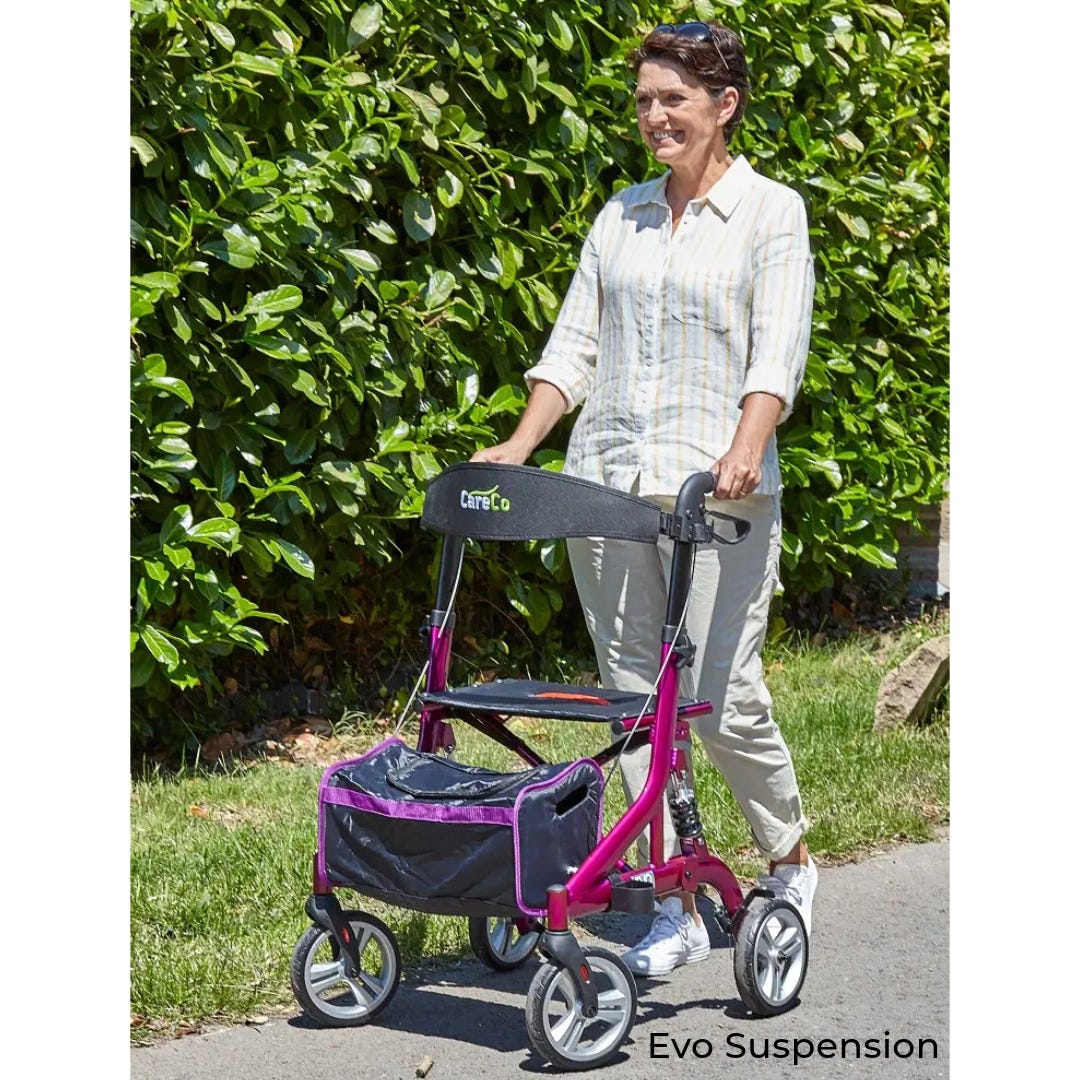 The technique with 4 wheeled walkers starts the same as all other walking aids – measure and adjust! Then when happy with the height, hold the frame with both hands, look forwards and very simply begin to walk with your normal strides! Easy.
The technique with 4 wheeled walkers starts the same as all other walking aids – measure and adjust! Then when happy with the height, hold the frame with both hands, look forwards and very simply begin to walk with your normal strides! Easy.
You don’t have to push the frame as such, it will just move forwards as you do but aim to land your front foot just inside the base of the frame, almost in line with the rear wheels on every stride.
Avoid the ‘stride, together’ technique of a two wheeled walker as you are safest to keep a smooth momentum with 4 wheeled devices. If you’re hunching over or your arms are reaching infront of you rather than near your sides the frame could be moving too fast for you and it might be worth considering a two wheeled walker like the Pano Walker - 2 Wheel Walking Frame with Seat above or practising your technique on carpet to slow it down before you venture outdoors.
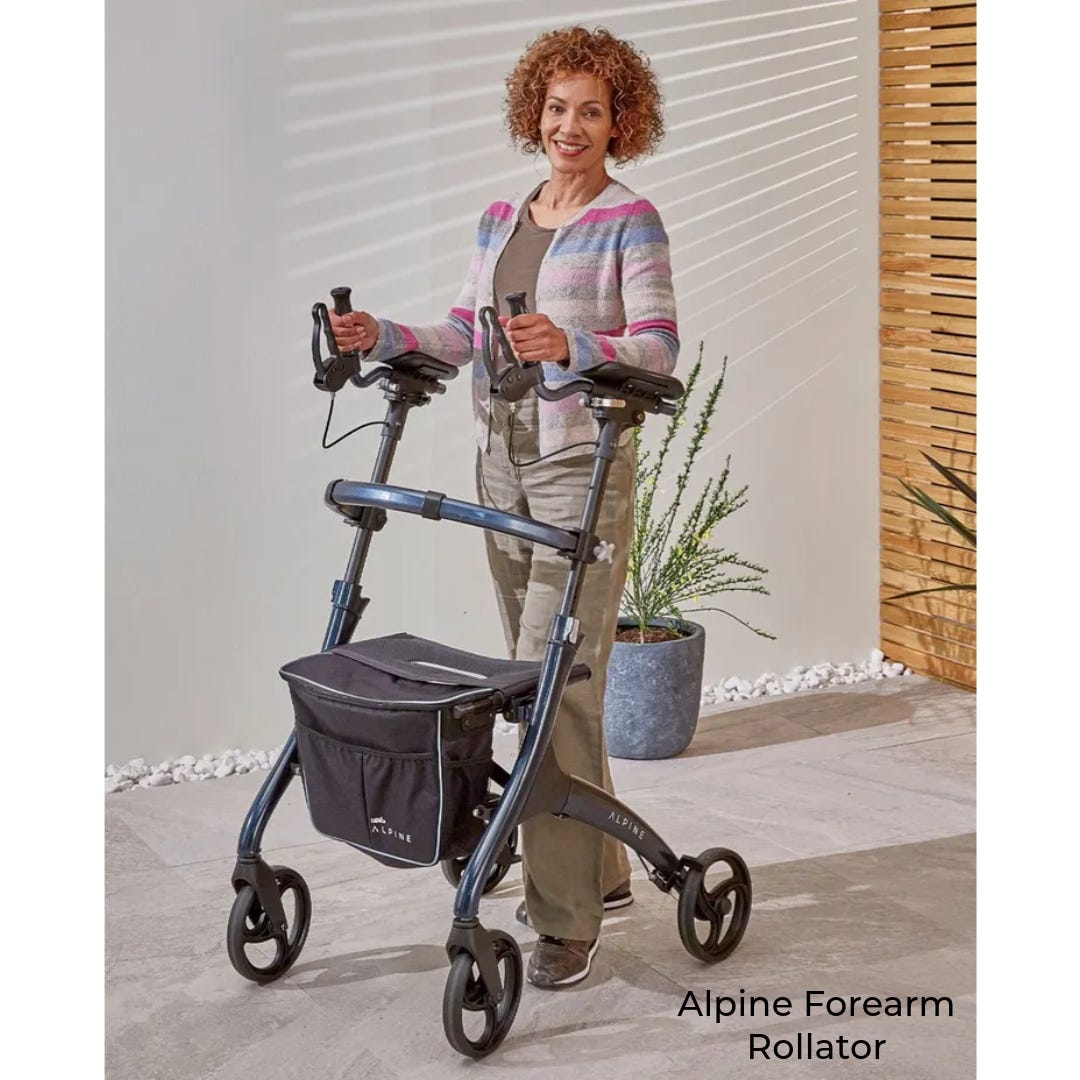 If you have poor hand function, arthritis or upper limb discomfort, maybe you’ve had a stroke and your grip is weak or you’re recovering from carpel tunnel surgery a standard frame might be contraindicative but the altered design of the Alpine Forearm Rollator - Mobility Walking Aid could be the key. With arm rests rather than hand holds, it offers the same support and stability of the above walkers but without the pressure on your hands and wrists!
If you have poor hand function, arthritis or upper limb discomfort, maybe you’ve had a stroke and your grip is weak or you’re recovering from carpel tunnel surgery a standard frame might be contraindicative but the altered design of the Alpine Forearm Rollator - Mobility Walking Aid could be the key. With arm rests rather than hand holds, it offers the same support and stability of the above walkers but without the pressure on your hands and wrists!
If you’re not sure what aid best suits your needs do take a look at my reviews of some other walking aid options at Natasha's Recommended Walking Aids.
But if there’s only one thing you take from this blog, please make it this simple tip: Not moving - brakes on! Whether you’re standing chatting, sitting waiting for the kettle to boil or transferring up before walking, please make sure the brakes are on. A walking aid should help you stay safe, not be the cause of a fall, and if used properly will give you oodles of confidence and plenty more miles under your belt!
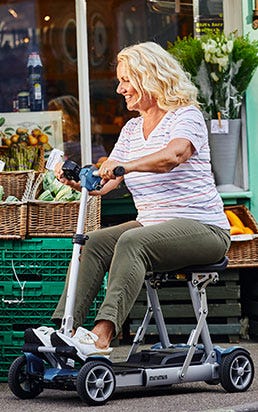

 Price Match Promise
Price Match Promise
 Next day delivery, 7 days a week
Next day delivery, 7 days a week
 Nationwide Showrooms
Nationwide Showrooms
 Rated Excellent
Rated Excellent
